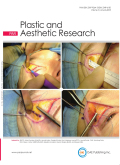- 钛学术文献服务平台 \
- 学术期刊 \
- 医药卫生期刊 \
- 外科学期刊 \
- 整形与美容研究(英文版)期刊 \
Point-of-care three-dimensional printing for craniomaxillofacial trauma
Point-of-care three-dimensional printing for craniomaxillofacial trauma
基本信息来源于合作网站,原文需代理用户跳转至来源网站获取
摘要:
Computer-aided design, three-dimensional printing, and additive manufacturing are revolutionizing craniomaxillofacial trauma surgery. Traditionally, this is completed via third-party vendors during online web meetings. Although this is effective, it can take several weeks to have custom plates arrive, negating its use in acute facial trauma. The price of 3D printers and software needed to complete this in-house are decreasing. This allows for expedited turn around, facilitating treatment in the acute setting. This article serves as a review of fundamental 3D printing principles and describes the process of virtually reducing facial fractures, 3D printing the reduced models, and having a plate ready for surgery in hours.

推荐文章
Source and composition of sedimentary organic matter in the head of Three Gorges Reservoir: a multip
Three Gorges reservior
Sedimentary organic matter
δ13C
Lignin phenols
Lipid biomarkers
Director 中cue point(线索点)声音同步控制技术
多媒体技术
Director 声音
线索点
内容分析
关键词云
关键词热度
相关文献总数
(/次)
(/年)
文献信息
| 篇名 | Point-of-care three-dimensional printing for craniomaxillofacial trauma | ||
| 来源期刊 | 整形与美容研究(英文版) | 学科 | |
| 关键词 | |||
| 年,卷(期) | 2021,(6) | 所属期刊栏目 | Review |
| 研究方向 | 页码范围 | 30-38 | |
| 页数 | 9页 | 分类号 | |
| 字数 | 语种 | 英文 | |
| DOI | 10.20517/2347-9264.2020.222 | ||
五维指标
引文网络
引文网络
二级参考文献 (0)
共引文献 (0)
参考文献 (0)
节点文献
引证文献 (0)
同被引文献 (0)
二级引证文献 (0)
2021(0)
- 参考文献(0)
- 二级参考文献(0)
- 引证文献(0)
- 二级引证文献(0)
引文网络交叉学科
相关学者/机构
期刊影响力
整形与美容研究(英文版)
主办单位:
出版周期:
月刊
ISSN:
2347-9264
CN:
开本:
出版地:
陕西省西安市高新区绿地SOHO B座1705室
邮发代号:
创刊时间:
语种:
eng
出版文献量(篇)
440
总下载数(次)
0
期刊文献
相关文献
推荐文献
- 期刊分类
- 期刊(年)
- 期刊(期)
- 期刊推荐
整形与美容研究(英文版)2022
整形与美容研究(英文版)2021
整形与美容研究(英文版)2020
整形与美容研究(英文版)2019
整形与美容研究(英文版)2018
整形与美容研究(英文版)2017
整形与美容研究(英文版)2016
整形与美容研究(英文版)2015
整形与美容研究(英文版)2014
整形与美容研究(英文版)2021年第9期
整形与美容研究(英文版)2021年第8期
整形与美容研究(英文版)2021年第7期
整形与美容研究(英文版)2021年第6期
整形与美容研究(英文版)2021年第5期
整形与美容研究(英文版)2021年第4期
整形与美容研究(英文版)2021年第3期
整形与美容研究(英文版)2021年第2期
整形与美容研究(英文版)2021年第12期
整形与美容研究(英文版)2021年第11期
整形与美容研究(英文版)2021年第10期
整形与美容研究(英文版)2021年第1期

 免费查重
免费查重










